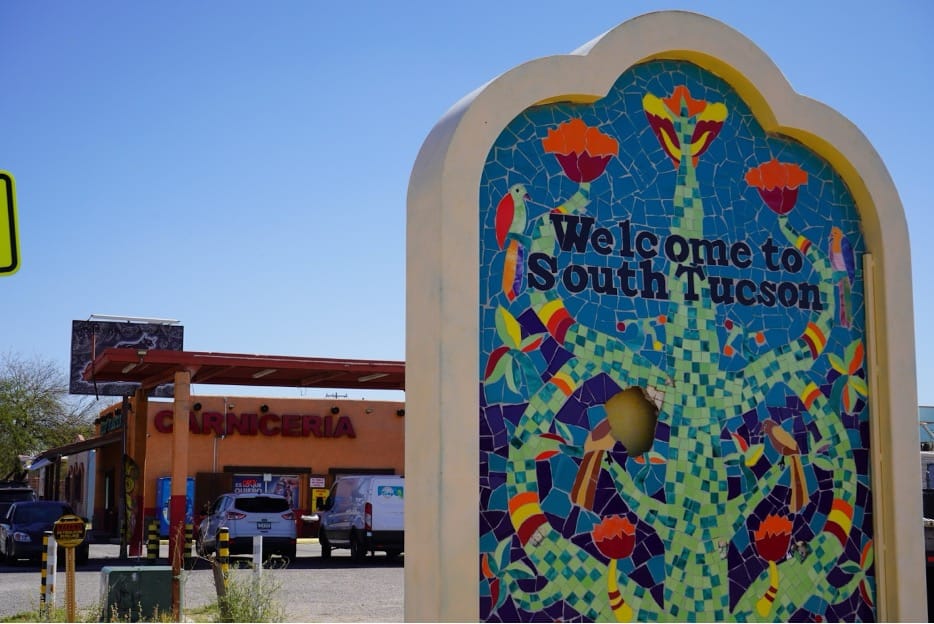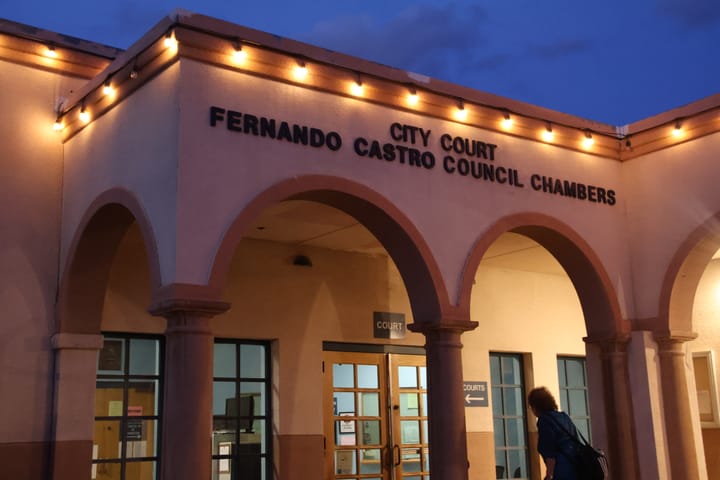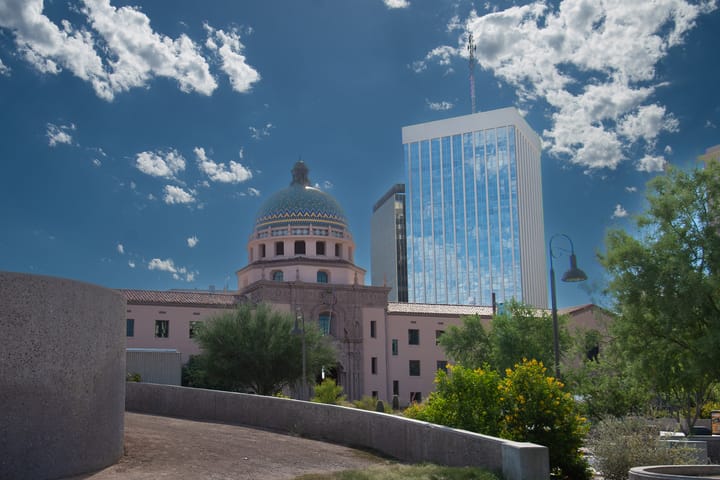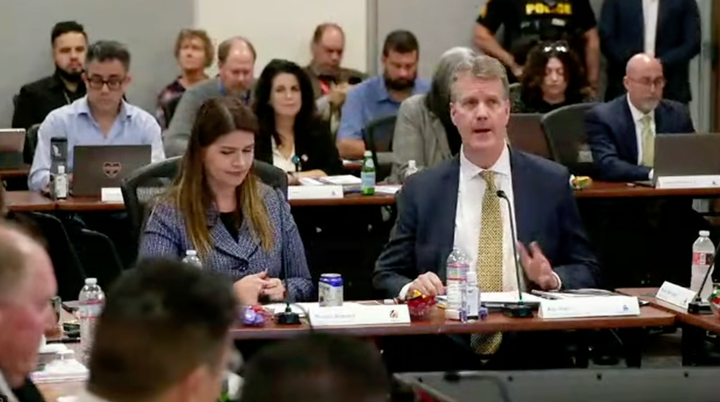$30K grant fuels effort to preserve South Tucson’s Latinx History
A new $30,000 grant awarded to the League of Mexican-American Women will support efforts to preserve South Tucson’s Latinx history through landmark identification, oral storytelling, and cultural archiving.

In South Tucson, where murals fade but memories persist, a new $30,000 grant is helping ensure the city's Latinx history won’t vanish with them.
The League of Mexican-American Women has received the nation's first-ever grant focused specifically on preserving Latinx heritage sites, fueling a one-year effort to identify landmarks, capture oral histories and safeguard the cultural legacy of a community often overlooked in national preservation efforts.
“How do we make sure we're saving the things that are important for future generations, and how do we make sure that we're also recording all those histories that we have here, making sure that those get told?” asked Los Descendientes de Tucson Executive Director and project consultant Rikki Riojas.
Los Descendientes facilitates and creates community programming to share and uplift the deep history of Tucson and its residents, including sponsoring the Mexican American Heritage History Museum.
“So often we carry those stories with us of our family and we don't tell anybody, and then they just die with us," Riojas said. "We want to make sure that doesn’t happen.”
South Tucson, known as the “pueblo within a city,” was founded in 1940 and is home to a culturally rich community — namely Mexican and Hispanic heritages. It has a population of just under 5,000, with 77% of residents of Hispanic origin, according to the 2020 U.S. Census Bureau.
“It's very unique in that way where it hasn't been gentrified yet and there's still that rich, diverse community and infrastructure projects that are part of that,” Riojas said.
The grant aims to preserve that culture, making sure that future generations can access the history of their ancestors and be proud of their identities. Nearly 30% of South Tucson residents are under 18, making preservation efforts even more significant.
“I feel like this community is changing and growing so rapidly that we need to pause to identify and start archiving those histories, to tell the story, to tell the narrative, or else somebody is going to tell it for the community. Or even worse, it can be erased,” said Selina Barajas, South Tucson’s community investment adviser.
The grant comes from Latinos in Heritage Conservation’s Nuestra Herencia program (“Our Heritage” in English). With about $600,000 in funding, it is the first national grant program solely dedicated to preserving Latinx historic and cultural sites.
LHC is based in Texas, but four of its employees were at South Tucson City Hall on Monday at a kickoff event announcing the grant, the first of a series of visits along the borderlands.
Director of Education, Outreach, Communications and Marketing Asami Robledo-Allen Yamamoto said her hope is that these preservation efforts will lead to a nomination for historical sites and more preservation efforts in South Tucson.
“We recently did an equity study and learned that less than 0.65% of sites on the National Register of Historic Preservation are dedicated towards Latinx culture,” she said. “That's why the grant program was created, so that we can help really create that equity within the national registry and South Tucson.”
The archive will be digitally accessible and will also be available at Tucson’s Mexican American Heritage History Museum.
The four streets that form the border between South Tucson and the rest of Tucson are more than roads: They protect a rich cultural history that’s written into the crevices and corners of South Tucson. Murals that highlight the area’s Mexican cultural pride are scattered throughout the city — some decades old and barely visible, but each telling a piece of South Tucson’s history.
“The stars are aligning for South Tucson, there’s a lot of good stuff going on,” said Josue Licea, South Tucson’s planning and zoning director.
Like many others born and raised in South Tucson, Licea begins his introduction with where he used to live — 32nd and 7th. The practice of introducing oneself with cross streets is common among South Tucsonans and reflects the pride and sense of community that comes from the 1.2-square-mile city.
“When you don't preserve something there's no richness to it, and then it becomes like any other area,” Barajas said. “There's no other area like South Tucson that I know in the world, but if we don't preserve that, no one's going to know that.”
The event on Monday included representatives from the League of Mexican-American Women, the City of South Tucson, LHC and other project leaders. After the announcement, attendees were treated to a tour of some of South Tucson’s historic sites.
The first stop on the tour was El Casino Ballroom, where attendees were given a crash course on the event space’s history by manager Fred Martinez and his daughter Barbie Martinez, next in line to take over as manager. The event space has been passed down in their family for generations.
From there, attendees visited Valencia Liquor at 330 W. 29th St., where longtime South Tucson resident Rosario “Chayo” Mendibles spoke about growing up in the house her grandmother built and the community she’s lived in her whole life. Mendibles is Barajas’ cousin.
“She's kind of like our family historian, she tells all the stories and she's also informally South Tucson’s historian,” Barajas said. “She knows all about South Tucson because she grew up there, her mom grew up there, her grandma grew up there. She has it all down in her head, but she doesn't have it on paper so that's why it's so important that we archive it and document it to pass on those stories.”
The event ended at Guillermo’s Double L Mexican Restaurant, another historic South Tucson site. Guillermo’s opened in 1948, just eight years after the city’s incorporation.
“We can't stop change, we're not going to be able to stop growing. We're not going to be able to stop it,” Barajas said. “However we can preserve history and make sure that people know that people were there and that there are stories there, and there was family there, and that there's going to continue to be stories.”
Susan Barnett is Deputy Editor of Tucson Spotlight and a University of Arizona alum. Contact her at susan@tucsonspotlight.org.
Tucson Spotlight is a community-based newsroom that provides paid opportunities for students and rising journalists in Southern Arizona. Please support our work with a paid subscription.



